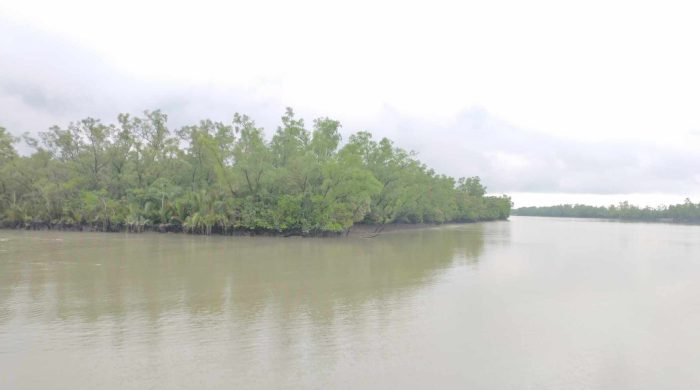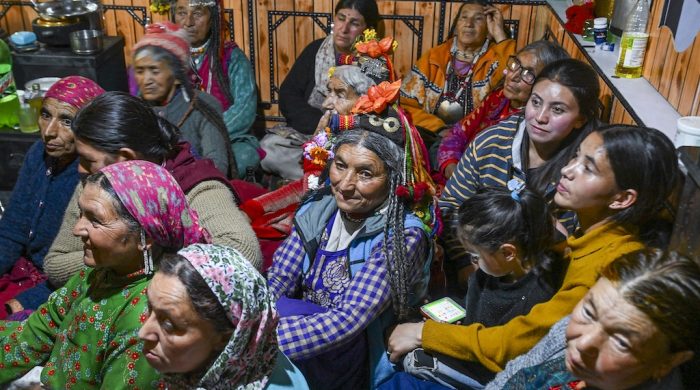Nuku Hiva: This paradise island is one of the remotest places on the planet

- Update Time : Tuesday, June 8, 2021
- 253 Time View

For miles on end there are hardly any inhabitants in sight on the French Polynesian island of Nuku Hiva. This South Pacific utopia is one of the world’s most remote locations and is an extraordinary part of the planet where a traveler can be as far from the crowds as it’s possible to be.
The view from the infinity pool in Le Nuku Hiva by Pearl Resorts, the only hotel on the island, is of the cobalt blue of Taiohae Bay. The natural beauty of this landscape stretches out onto a kaleidoscope of cliffs, rocky peaks, deep bays and steep valleys.
Tahiti and Bora Bora have long been the stars of French Polynesia, but Nuku Hiva basks in its own limelight as the second largest island in the country. It is also the capital of the Marquesas Islands, one of the most untouched archipelagos on our planet.
The islands have recently opened up once again to visitors, with tourists who have spent the previous 30 days in the United States now welcome. Possibly thanks to the remoteness there have been relatively few Covid cases among the population of just under 3,000 people.
However, the journey to this paradise of seclusion is not straightforward. It’s an eight-and-a-half-hour flight time from San Francisco International Airport to French Polynesia’s Tahiti Faa’a Airport.
It’s a measure of how far-flung the individual islands of this archipelago are that the connecting Air Tahiti flight to Nuku Hiva Airport takes another four hours.
Journeying from the airport to the main town of Taiohae in a four-wheel drive vehicle is an enthralling 90-minute ride. Stunning vistas, tall ferns and pine trees are found at every hairpin bend. Navigating Nuku Hiva’s rugged cliffside roads comes with surprises, such as wild ponies, who stare blankly as they take right of way.
Travelers in need of a digital detox, or just an escape from the stresses of recent times, will relish being marooned for a few days in this hard-to-reach island.
Nuku Hiva has an otherworldly and primitive feel to it. There are no tall buildings and the only cell phone network is 2G. It has the basic needs for a community; a post office, a hospital, a town hall, a bank, five grocery stores and a pharmacy.
There’s a mystical allure that permeates through Nuku Hiva. Locals say it’s a place where you can feel the authentic “mana” — the spiritual life force of Polynesian culture. It’s hard not to feel thousands of years of history, especially as striking Tiki and Moai statues depicting ancient gods or ancestors are proudly dotted around the island.
Looming over Taiohae is Tiki Tuhiva which, at 40-foot-tall, is the highest contemporary sculpture in the Pacific. It shows a female Tiki being protected by a male warrior. Impressively, the Marquesan stone craftsmanship found on this iron statue is unique to the island. This famous Tiki sits at the top of Mount Muake, and it’s definitely worth the short hike to have a panoramic view of the bay’s rocky coastline.
Near Tiki Tuhiva is also the Tohua Koueva Archaeological Site, which has undergone a meticulous restoration to display what life was like for the ancient Marquesans long before the arrival of Europeans. This massive Tohua (open-air gathering place) was the center for clan festivities and is set amid the eerie forest grounds of a former ceremonial royal playground. Here games were played and human sacrifices made.
Gigantic banyan trees form part of the majestic scenery of ancient marae temples and dozens of ceremonial stone platforms, known as paepae. Tiki statues carved out of stone stand outside of refurbished thatch-roof huts.
Traditional culture is of prime importance here. William Teikitohe, a tour guide working for Le Nuku Hiva by Pearl Resorts, points out easy to miss archaeological remains including countless petroglyphs of animals and humans.
Having been born and raised in Nuku Hiva, Teikitohe’s reveres the site as sacred. “It’s a rare place and it’s the only place where we can get the real essence of Marquesan culture,” he tells me.
With more of the new generation of Marquesans turning away from their roots, Teikitohe wants to preserve the importance of such sites.
“Today the local people don’t want to visit the archaeological sites, they prefer to drink a beer in the restaurant. It’s bad.”
He adds: “I like to visit here because I need to know the story of my ancestors — and it’s not in the restaurant.”
There’s no public transportation from Taiohae to other parts of the island, so hiking is the top activity in Nuku Hiva. Many tracks on the island’s dedicated footpaths lead to mysterious traditional settlements and more spell-binding wonders of nature.
The hallmark attraction is the hike to Vaipō waterfall in the ancient village of Hakaui.
This iconic horsetail-type waterfall has formed within the midst of Hakaui valley’s jagged basalt peaks. Endless streams of water drop from a height of 1,148 feet (250 meters), making this waterfall the tallest in French Polynesia.
Guidance to the valley is strongly recommended with local tour operator Cannibal Art, which offers a two-day camping package at the cost of $150 per person. Led by Tangy, a native to the valley and his Croatian-born partner Ana, both are respected experts on the route.
The journey to Hakaui begins with a scenic 40-minute boat ride from Taiohae bay, in which passengers come close to the island’s rocky and fortress like promontories. Prices start from $50 for a return ticket.
Land of Men
Most of Nuku Hiva’s buzz is at Taiohae bay’s cruise port, where yachts en route to Australia from America glide through the bay’s coastline — a glitzy contrast to the island scenes of villagers going about their day by horseback.
Daily life here goes at its own pace. Laid back locals can be found gathering to listen to strumming banjos while others crack nutshells on sidewalks. That’s not to imply indolence. Many make a living from traditional wood or stone carving and hunting.
Others have opened up their family homes as pensions. These are the islands’ most authentic, wallet-friendly and social lodging options for visitors. Local fishing is also popular, and Saturdays remain the busiest day at the harbor with the fish market raking in plenty of customers.
There’s creativity to be found at the Tapivai Crafts Market, which showcases a great selection of Marquesan crafts at reasonable prices. A more intimate experience awaits at Marquesan craft houses.
One sculptor’s house on Teikitohe’s guided tour is lined with shelves displaying a collection of cows, sheep, goat and buffalo horns. The sculptor uses these to create necklaces and earrings carved of bone.
Nuku Hiva is nicknamed “The Land of Men,” thanks to warrior traditions that persist today. Local men, including Teikitohe, take pride in wearing the horns of animals they’ve killed around their necks.
Craftsmen also still carve out objects like the casse tête, a rosewood club once brandished in battle but now used for traditional haka dances.
The center of town is easily explored on foot and it’s worth strolling from Nuku Hiva harbor to Notre Dame Cathedral. Unlike its Parisian counterpart, this sanctuary is a relatively new structure while the carvings inside are classic Marquesan.
Woodwork aside, the Notre Dame Cathedral provides a peaceful respite from the sweltering heat and humidity of Nuku Hiva.
For relaxation, Nuku Hiva has plenty of deserted beaches. On the north coast of the island in the village of Hatiheu, a picture-postcard setting can be found on the palm-lined black sand shores of Hatiheu Bay.
An even further surreal beach experience awaits on Anaho Bay, which is located two kilometers east of Hatiheu. This arched bay is framed by rolling green hillsides and is very inviting for a swim. Thanks to the tiny reef spot contained in its waters, it boasts some of the finest snorkeling in the Marquesas. Luckily, one can have the pleasure of spotting lovely coral or possibly a turtle or reef sharks.
In addition to diving, Anaho and Hatiheu are the only places on the island where you can experience horseback riding. Nuku Hiva a Cheval, a local tour operator showcases both villages by horseback.
Finding somewhere to eat while out can be challenging but it’s worth the hunt as Polynesian cuisine is a delightful taste of the South Pacific.
Local delicacies are packed with island flavors and unsurprisingly seafood and fish options dominate menus. A must try is the national dish, poisson cru which means “raw fish” in French but locals refer to it as “ia ota.” It tastes and looks more appealing than it sounds.
Chez Yvonne’s in Hatiheu serves up generous, reasonably priced portions of classics like river shrimp and mixed seafood platters and is popular with locals and visitors.
Back at the Le Nuku Hiva hotel guests can check into one of 20 premium and deluxe bungalows set amid the hills surrounding the main lodge, which is located in a sprawling tropical garden. These rustic wooden bungalows have been individually designed by a local artist and the interiors give off a distinctive Marquesan character.
The hotel’s Premium Bay View Bungalow comes with a private terrace which offers panoramic views of Taiohae Bay and the dramatic peaks of the mountains that encircle it. It’s a magnificent sight to wake up to and guests can also wander just 50 steps to enjoy the black sand beach below.
Despite the Polynesian lavishness, there’s no escaping the alarm clock of roosters crowing at first light. Insects and bugs also enjoy trooping their way into the bungalows, although the hotel thankfully provides bug sprays and repellent.
The hotel’s restaurant Le Pua Enana is a full-on candlelit dining under the stars experience, its menu mixing popular French cuisine with Marquesan influences.
Meanwhile, the poolside Tiki bar offers a great selection of the island’s freshly made cocktails, which are available any time of the day.
Business has understandably slowed down for both the hotel and guides like Teikitohe, who remains optimistic about the island bouncing back.
“Tourists can discover so much Polynesian nature and culture here and the Marquesan people want to share our way of life with them,” he says. No matter how long you plan to visit, Teikitohe suggests to “Aita pe’a pe’a” — in other words make the most of your time.





















